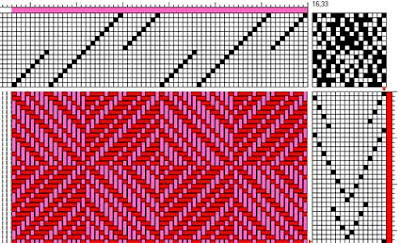
As I also like to weave with horsehair... why not combine them? It ought to look, well, at least "different", with a horsehair fringe hanging to the back...
As these collars are curved, the first problem to overcome was the curving - .
Hmmm. IF the fabric was pleated at the bottom of the collar...
Or - if the fabric was elastic - could it them be persuaded to stay wider at the top? Kind of "built-in" pleats?
OK - I had read several articles about self-pleating fabric. (I had also tried making self-pleating fabric several times - most of them not being successful.) Tried to ask my local friends. Nobody had any idea.
Started to sample.
Several samples later, I had something that worked.
Now, I was concerned that, perhaps, the collar would not stand up to its own weight. What if it just "collapsed" and folded down?
So - I needed a stiffener. And it had to be integrated in the collar, as both sides were to be visible.
As it happens, I know about double weave ;-) - so I constructed a weave with pockets of double weave. But what to put in the pockets? I tried "polyester boning" - too wide, would not be folded double, and too weak if cut in half. Tried some other stiff plastic band thing - no. Then I remembered: a sewing friend had used these:

They are used for tying-together cables and such, can be found at the hardware store. (After nearly 14 ears in the neighborhood, half of the hardware store staff hide when I enter - the other half enjoy my "impossible" requests.)
In the sampling, I had found that both the number of picks per stripe ("block"?) and the number of hairs per pick were very important. In this case, I got a nice pleating with 12 picks of 5 hairs each before changing block.
As horsehair does not "turn the corner", I needed to do something to secure the selvages. Two tabby picks after each stripe was the solution. (The double-weave pockets were woven "to size", and the stiffeners were inserted on loom. As usual, I'm using different colours for the two layers, 'cos it is easier to see what's going on.)

I wove about 120 cm for the collar - hoping it would be enough. Every sample that is "smaller than life" is in some way deceptive... percentages sound (are) easy, but the smallest inaccuracy will turn into a big inaccuracy at double the length.

I cut it off, and - nothing much happened. Until I threatened it with the steam iron, that is.

The most succesful sample has got a life of it's own. It has been in a couple of guild exhibitions - once as a fan, once as a vase:


And... should it ever get "tired", a little steam will restore the elastic quality.















